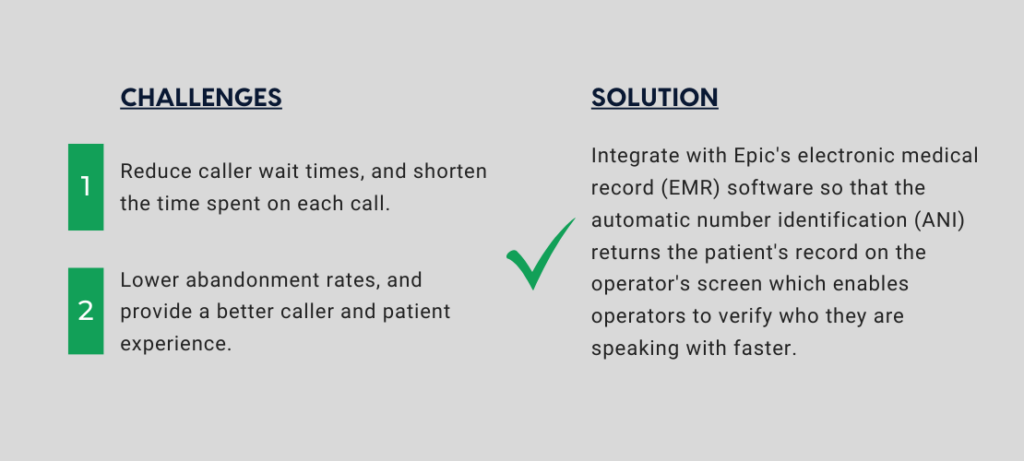State University of New York (SUNY) Upstate Medical University, located in Syracuse, New York, has a campus that is comprised of hospital, clinical, academic, research, residential, and campus facilities. The Upstate University Health System includes Upstate University Hospital, Upstate University Hospital at Community Campus, Upstate Golisano Children’s Hospital, and multiple offices to serve 1.8 million people. The care they provide extends from Canada to Pennsylvania and includes a robust telemedicine program to assist rural communities.
The origins of SUNY Upstate Medical University stretch back to 1834, and today, it is the only academic medical center in Central New York. The University includes four colleges: College of Nursing, College of Medicine, College of Health Professions, and College of Graduate Studies, with a total enrollment of over 1,500 students. SUNY Upstate Medical University is the region’s largest employer, with 9,460 employees. With a $600+ million payroll and numerous facilities, Upstate is a powerhouse for the economy of Central New York, generating $2.3 billion for the region.
Identifying Areas for Improvement to Save Time and Enhance Patient Caller Experience
SUNY Upstate Medical University wanted to improve its healthcare call center performance and reduce caller wait times, shorten the time spent on each call, lower the call center’s abandonment rates, and provide a better caller and patient experience.

When looking at the call answering process, they discovered the time it took for operators to obtain information from callers could be improved. “We realized operators had to ask a series of questions to figure out which patient they were talking to,” said Jody Williams, Call Center Systems Administrator for Upstate. “Right now, they answer the calls with, ‘Thank you for calling, this is Jody, may I have the patient’s date of birth?’ and they search for everyone by birth date.”
Call center operators needed more information about each caller sooner to reduce the call’s overall time and handle calls more efficiently. Staff from Upstate’s IT and call center departments realized that integrating with the Epic electronic medical record (EMR) software used by the hospitals and clinics would save valuable time.
Healthcare Communication Partners
Healthcare organizations and their patients rely on good IT partners to help with fast and accurate communications. However, most healthcare facilities use a mix of disconnected technology, and sharing information among healthcare IT systems has traditionally been a challenge.
“When the call comes in, the caller ID is pushed out to Epic, and then Epic returns the patient’s record on the operator’s screen. Operators can verify who they are speaking with using a shorter list of questions related to everyone associated with that caller ID.”
Jody Williams, Call Center Systems Administrator for Upstate
Upstate has used Amtelco’s healthcare communication software since 2006 and works closely with Amtelco staff to meet their enterprise-wide communication needs. Jody commented, “We use several products from Amtelco. Perfect Answer enables us to record custom greetings and automatically plays those greetings before operators answer calls. We use Appointment Reminders and just started using MergeComm to send SMS reminders, which people seem to really appreciate.”
Upstate contacted Amtelco for guidance, and Amtelco confirmed it was possible for their Guided Scripting to bridge the communication gap while making sure calls would look the same to operators. The automatic number identification (ANI) would be sent to Epic’s EMR database for incoming calls. Jody explained, “When the call comes in, the caller ID is pushed out to Epic, and then Epic returns the patient’s record on the operator’s screen. Operators can verify who they are speaking with using a shorter list of questions related to everyone associated with that caller ID.”
Testing the Integration
Integration testing began between Upstate, Amtelco, and Epic. Amtelco worked on the scripting piece, and Upstate’s in-house Epic staff worked with experts at Epic’s Verona, Wisconsin campus.
“For this project, we collaborated with Amtelco staff, several members of our IT group, and one of our Epic experts on site who worked with an expert from Epic’s home office,” said Jody. “Before the integration was a success, we had several calls between all parties to identify system requirements and build the scripts using suggestions from Epic. Amtelco staff did virtually all the scripting, and they’ve been outstanding to work with.”

Evaluating Results Using Amtelco’s Detailed Reporting
Over time, Upstate will use Amtelco’s Detailed Reporting function to assess the results of the integration and determine how much time this project has saved. Amtelco keeps track of the time spent on calls and they are looking forward to seeing improved statistics.
“The integration will first be used with our ambulatory call center because they handle virtually all of the incoming calls for about 14 of our ambulatory departments, which includes general medicine, dermatology, pulmonary, etc.,” Jody explained. “They do some appointment scheduling, a lot of message taking, transferring calls to a nurse, and various requests that come from the patients. Any time a patient dials the main number for each of those departments, it goes to this call center, and the wait time had been extremely high. We implemented the Epic integration nine months ago, and as of now, it looks like we are saving an average of about 15 seconds on each call. We’re hoping we can cut 10-20% off the duration of each call. That will make a huge difference over the course of the whole day.”
Future Integration Plans for Efficient Workflows
There are plans to use this technology throughout more of Upstate’s call center departments. Some call center groups rely heavily on scripts used for appointments, physician referrals, prescription renewal, scheduling, crises, and emergencies. These areas also hope to save time on calls and serve patients more efficiently by using Epic integration.
Scripts can be shortened because much of the information the operators need will already appear on their screen as they answer the phone call. According to Jody, “Our medical messaging group currently follows and completes a script with a caller’s name, patient name if different, provider information, and then they look up the doctor on call and add that to the script. After the integration, we will be able to pull most of that info from Epic.



